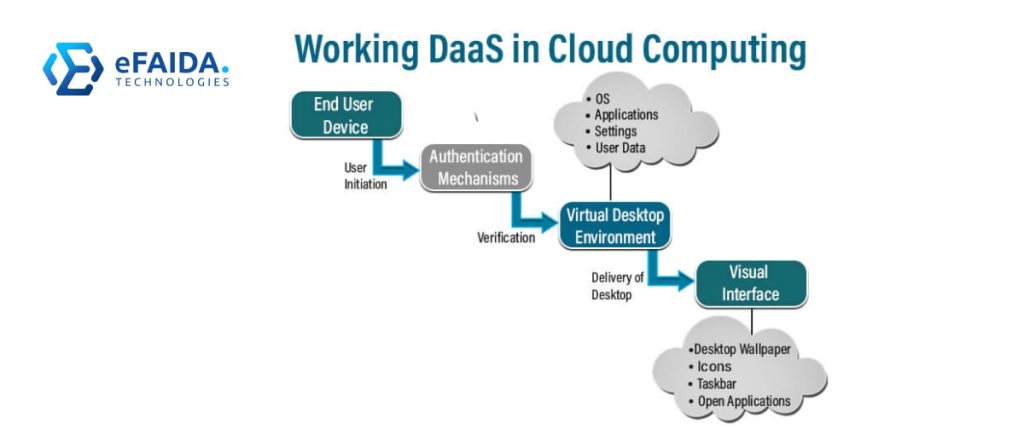Introduction
The more significant concern in today’s software development environment is the velocity of feature releases. The processes of classical development models can barely, continuously meet the pace resulting in long intervals between updates and disillusioned users. Modern DevOps is a practice of combining the development (Dev) and operations (Ops) processes that were established to be a real game-changer. However, establishing and especially maintaining a high-quality DevOps system is difficult at times. This is where DevOps as a Service (DaaS) plays an important role as it provides faster and more efficient ways of delivering the services required for the DevOps model with CI as a part of it.
Blessed are those who can get into the details of CI with DaaS as seen in this blog that examines how it enables easy integration of code changes and testing to spur development cycles. This article focuses on CI with DaaS, and in addition to that, we’ll also look at how CI works, some of the common questions that users have, and much more so that you can harness CI into your organization.
Streamlining Development with Continuous Integration (CI)
CI is one of the fundamentals of DevOps that suggests integrating the changes in the code by multiple developers often into the master branch. This results in better and faster performance of software since bugs are detected and eliminated before they cause further complications.
Here’s how CI typically works:
- Developers Commit Code Changes: The current status in the development environment is updated by developers through a version control system, often called a repository, such as Git.
- Automated Builds: Whenever a change is made to source code, typically through a commit, there is a process known as Continuous Integration where the CI server initiates a build process that compiles the existing code for testing.
- Automated Testing: Testing gets triggered the moment the build process starts to help identify functional or integration problems during the early stage of development.
- Feedback and Resolution: Integrated with the CI server, the developers can get a full report of the tests to help correct any issues that may arise.
Unlocking Agility: Benefits of CI with DaaS
By integrating CI with DaaS, you can unlock several key benefits:
- Faster Time to Market: Regularity in code integration and testing means that bugs are discovered quickly and can be fixed, making the process of deploying faster.
- Improved Software Quality: Automated testing is a way to identify potential problem areas early in the development process to deliver better releases.
- Enhanced Collaboration: CI enhances the communication and cooperation between the Dev and Ops teams because only such an approach gives the common vision of the entire code.
- Reduced Risk of Breakages: Frequent integration helps to reduce the possibility of having a major problem during deployments.
- Simplified Management: The providers ensure the CI infrastructure and tools, which can relieve the pressure from your development team.

Putting CI into Action: The DaaS Approach
DaaS simplifies CI implementation by providing the following:
- Pre-Configured CI Tools: When adopting DaaS, there’s no need to set up and configure CI and tools such as Jenkins or GitLab CI/CD on your own.
- Automated Build Pipelines: DaaS providers may provide out-of-the-box CI pipelines which may be tweaked or brought in as-is that build, test, and provide feedback.
- Scalable Infrastructure: DaaS environments allow for a highly available and flexible architecture that can accommodate integrated builds and continuous testing.
- Security Features: Security measures are incorporated into the CI process to address code issues and requisites pertaining to vulnerability.
Conclusion
Continuous integration(CI) is something that is crucial to have if one wants to have a proper and efficient DevOps approach. Through adopting DevOps as a Service one is able to access the tools, pipelines, and the infrastructure that is well configured in order to help in implementing CI processes and make the software development process more efficient. Through the use of CI with DaaS, you will be in a position to supply high-quality software in the market in record time as you impose competition in the current market.
Frequently Asked Questions on CI with DaaS
Q1. What are some popular CI tools offered by DaaS providers?
When it comes to integrations, most DaaS providers integrate standard CI solutions such as Jenkins, GitLab CI/CD, Bamboo, and CircleCI.
Q2. Can I customize the CI pipeline with DaaS?
Yes, most DaaS solutions provide the flexibility to extend, or modify, the CI pipeline to support your development tools and test frameworks.
Q3. How does DaaS ensure code security during CI?
Some features that can be added by DaaS providers into the CI pipeline are code scanning or static analysis tools that check for possible breaches.
Q4. What are some best practices for CI with DaaS?
- Prefer short code modifications to allow integration and testing of code to be incremental.
- Specify clear and detailed test scripts to automate the process.
- CI pipelines should be monitored for failure when they occur, necessary actions should be taken to rectify them.
- Always adapt the CI process against feedback and performance metrics data gathered from projects.




